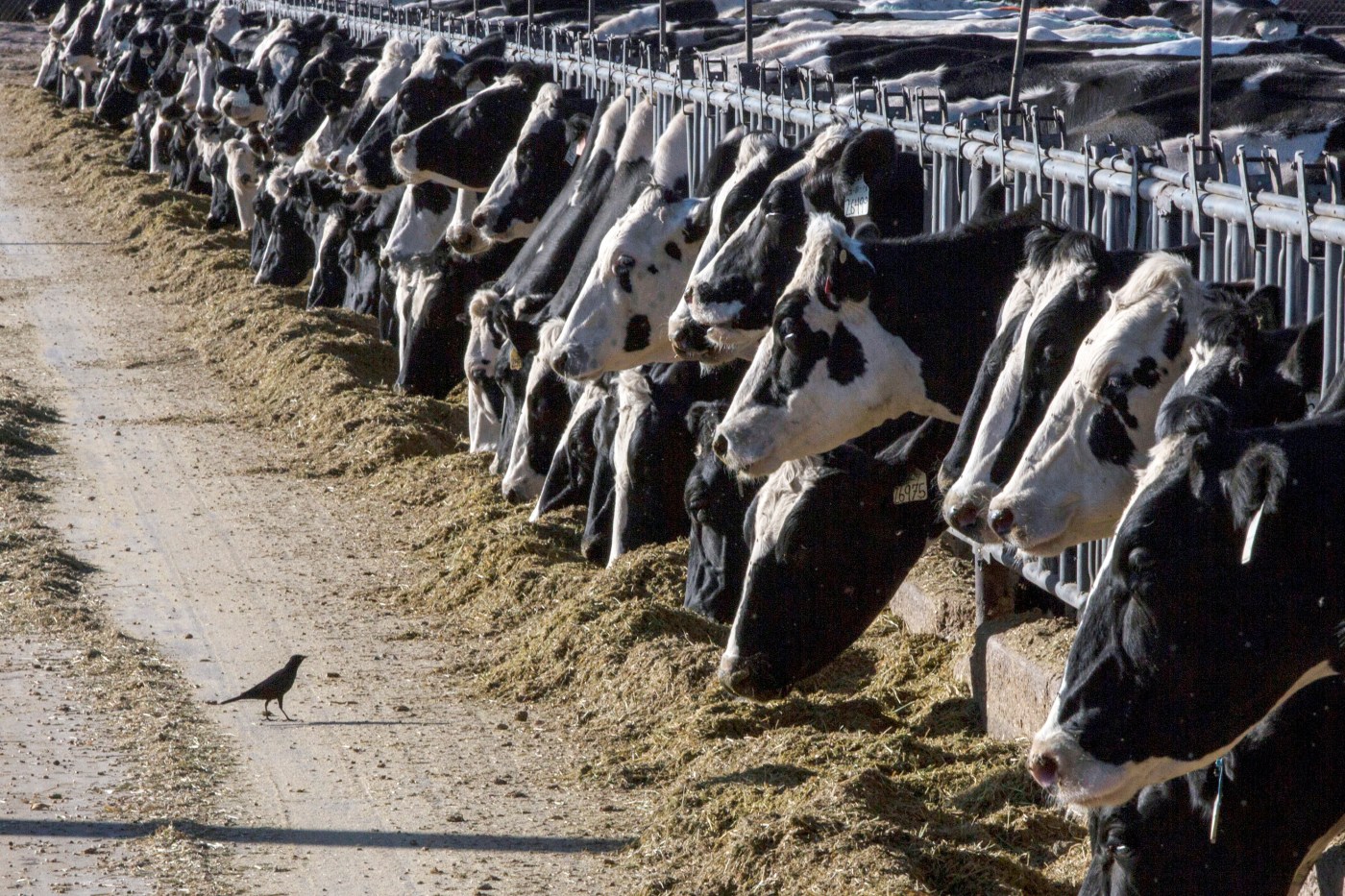As avian flu spreads beyond Central Valley dairy herds to farms in southern California, Gov. Gavin Newsom declared a state of emergency Wednesday to bolster and streamline the state’s response to the virus.
“This proclamation is a targeted action to ensure government agencies have the resources and flexibility they need to respond quickly to this outbreak,” Newsom said in a statement.
The emergency declaration allows the governor to release state funds and other resources to help state and local authorities hire staff and issue contracts to combat the contagion. If needed, it grants the governor broad power to issue mandates intended to slow the spread of the virus, as well as to bypass certain state laws that could slow the response.
It also could help boost testing capacity, which officials hope will help find cases that have likely gone undetected. There are no reports that the virus has arrived in dairies in the rural stretches of the Bay Area, although the state does not disclose the names of affected farms.
The current public health risk is low, according to the Centers for Disease Control and Prevention. To date this year, 61 human cases of bird flu have been confirmed in the U.S. The virus isn’t known to spread among people and is rarely caught from exposure to infected animals. Where human infections have occurred, it is usually mild and manageable.
But on Wednesday, the CDC confirmed its first known severe human infection of bird flu in a patient from southwest Louisiana. The patient, who was hospitalized, is over age 65 and has other health complications, according to the Louisiana Department of Health.
The virus in the Louisiana patient differs genetically from the virus spreading among dairy cows. The strain that sickened the Louisiana resident is known as the D1.1 genotype, which circulates among wild birds and poultry workers. The strain circulating in dairy cows, and infecting California farmworkers, is known as the B3.13 genotype.
Recently, D1.1 infected a teen in Vancouver, British Columbia, who had a severe case that required intensive care. The sequencing data suggest that the teenager’s virus contained two possible mutations that could enhance the virus’s ability to infect human cells, and another mutation that could allow it to replicate more easily in human cells, not just in the cells of its usual bird host, according to the journal Nature. Of three dozen close contacts of the infected teenager, none became sick.
Bird flu doesn’t spread through the food supply, except in raw milk. A recent Stanford study found that the virus remains infectious in refrigerated raw milk for up to five days. It is killed by pasteurization.
After emerging in 2020, the virus triggered major outbreaks in birds in Europe, Africa and Asia. It arrived in the U.S. in January 2022 and stormed through the nation’s largest concentrations of poultry farms in the East and Midwest, pushing up egg prices.
Despite a swift response — biosecurity measures at farm entrances, the immediate slaughter of potentially infected animals, quarantining of affected farms — the disease has continued to spread, infecting dairy cattle.
The continued spread of the virus, now widespread among wild birds and affecting nearly half of California’s dairy farms, is a worrisome development. The more it spreads, the more chances it has to mutate.
California’s local public health officials welcomed the declaration, saying the state must rebuild the capacity of the core public health workforce and infrastructure to quickly identify, respond, and contain public health threats.
“We appreciate Governor Newsom’s action to provide flexibility and position California to request more federal resources in support of public health officials’ ongoing effort to prevent spread of H5N1, also known as bird flu, in livestock and humans,” said Elsa Mendoza Jimenez, president of the County Health Executives Association of California and director of Health Services for the County of Monterey Health Department.
In another step to escalate the response, the U.S. Department of Agriculture announced Tuesday that a second round of states have been added to its new National Milk Testing Strategy, bringing the number to 13. These states represent eight of the top 15 dairy-producing states, and cover half of the nation’s total production. Farmers and dairy processors in these states may be required to provide samples of raw milk on request from the government.
The USDA on Tuesday confirmed five more outbreaks in dairy herds, four from California and one from Texas. The outbreak has affected 865 dairy herds in 16 states this year. The vast majority of those diagnoses are in California, while one herd each tested positive in Nevada and Texas.
The USDA also reported more poultry outbreaks from three states. The avian flu has also been confirmed in almost 124 million poultry in 49 states.
Some counties, like Sonoma, earlier declared a state of emergency to help mitigate the effects of the disaster, including assistance for businesses. In November 2023, avian influenza barreled through Sonoma County’s historic poultry region, forcing the slaughter of more than 1 million birds and inflicting heartbreak and economic disaster on small family farmers in the once-famed “Egg Capital of the World.”
“While the risk to the public remains low,” said Newsom, “we will continue to take all necessary steps to prevent the spread of this virus.”












